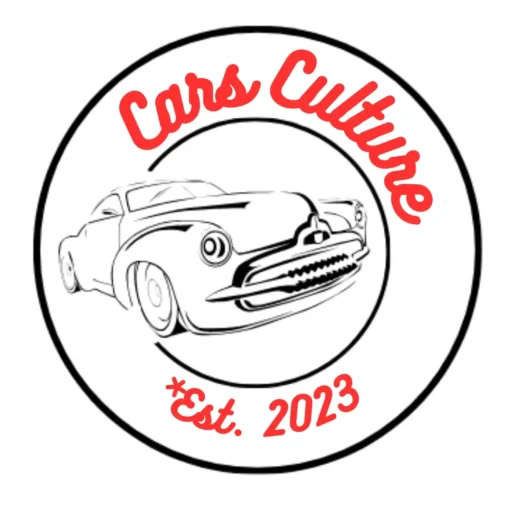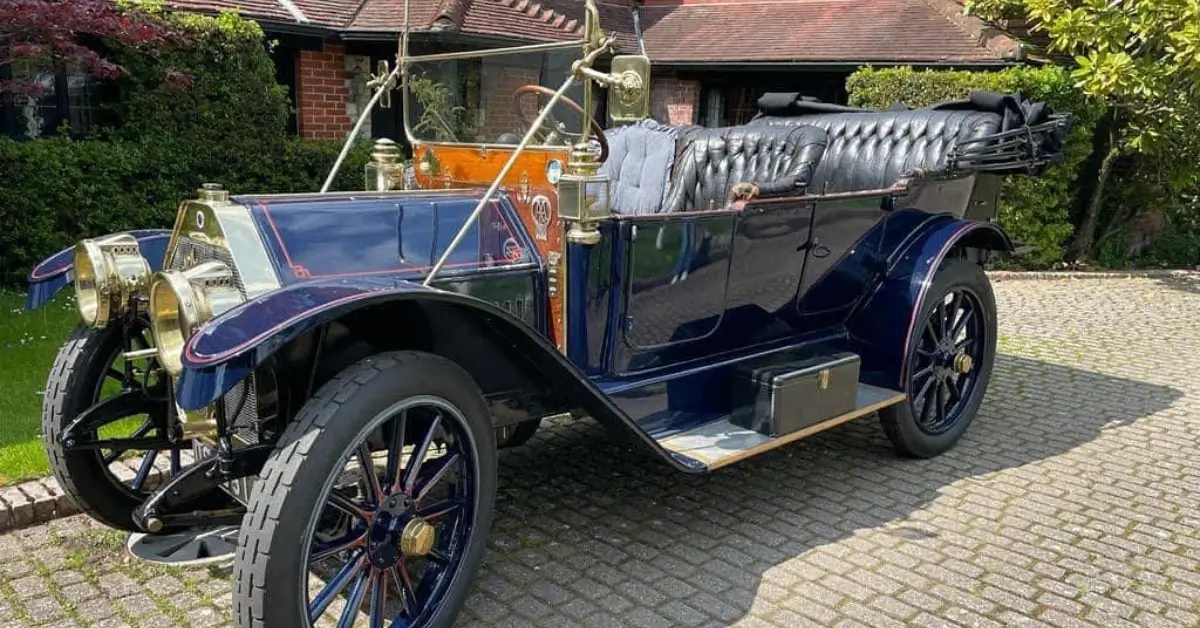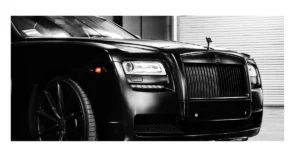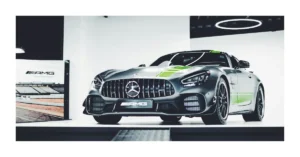The world of automobiles has come a long way, and the 1910s were a markable era for modern Cars. As we take a look back at the 1910 cars, we take an eye on the foundation for the cars we know and love today.
During the 1910s, vehicle production skyrocketed and assembly lines were introduced, revolutionizing the auto industry. These 1910 cars marked the beginning of a transportation revolution, bringing more freedom and accessibility to people around the world. From the powerful Pierce-Arrow Model 66 to the stylish Stutz Bearcat, these classic vehicles represent the history and the enduring legacy of automotive innovation.
As we dive deeper into the world of 1910 cars, we invite you to join us on this discovering Journey as we’ll explore the unique features, designs, and personalities of these timeless machines and why they continue to captivate the hearts and minds of car enthusiasts today.
Early Innovations
As we delve into the world of 1910 cars, we’ll explore three key developments that had a significant impact on the cars of the era.
Introduction of Assembly Line
Henry Ford revolutionized automotive production by introducing the assembly line technique in 1913. This innovation dramatically reduced the time required to manufacture a car and lowered overall production costs. The assembly line, essentially a conveyor belt system, allowed workers to efficiently maintain each car by adding parts as the vehicle moved along the line. This allowed manufacturers to ramp up production and make cars cheaper.
Materials Used in 1910 Cars
Cars in the early 20th century were primarily made of steel, with other materials like wood also playing a role in their construction. However, as the industry evolved, manufacturers started investigating lighter materials to improve fuel efficiency and increase performance. Some of these materials included aluminum, brass, and cast iron.
The advent of Closed-Body Cars
One notable trend in the 1910 cars was the move towards a closed-body, which provided greater protection from the elements and more comfort for passengers. Previously, many vehicles had been open-topped, which left passengers exposed to the elements and limited their usage during inclement weather. The introduction of closed-body cars brought new opportunities for interior design and function, whilst creating a more luxurious and refined driving experience.
As we explore the early innovations in 1910 cars, it’s fascinating to see how these developments laid the foundation for the automotive industry we know today. In my opinion, it is breathtaking to see how These innovations improved over the Years.

Markable Manufacturers
When it comes to 1910 cars, we need to have a look at the incredible manufacturers that marked this era. Their innovation and vision laid the foundation for the future of the automotive industry. Let’s take a look at some of the most remarkable manufacturers that produced 1910 Cars, shaping the course of automotive history.
One company that stood out during this period was Ford Motor Company. They not only brought affordability through mass production, but also introduced the moving assembly line, low prices, and consistent quality. The Ford Model T became a symbol of the era, taking the automobile from a luxury item to a must-have for the masses.
Another innovative player in the 1910s was Pierce-Arrow. Known for their luxurious and powerful vehicles, the Pierce-Arrow Model 66 and Model 48 became icons of the time. These two models showcased the craftsmanship and attention to detail that the company was famous for, solidifying its role as a key player in the industry.
During this decade, there were also a multitude of smaller automobile manufacturers that contributed to the growth of the industry. For instance, the Chicago Auto Show in 1911 displayed the sheer number of producers that were emerging at the time, responding to the increasing demand for cars. Some of these lesser-known, yet innovative companies include:
- Adams-Farwell: Known for their unique rotary engines, the Adams-Farwell vehicles showcased the company’s dedication to engineering excellence.
- Aero Car: The Aero Car (1919 automobile) was one of the earliest examples of aerodynamic design, with a streamlined body that set it apart from its contemporaries.
- American (1911 and 1914 automobiles): The American automobiles were known for their reliability and endurance which made them a popular choice among buyers.
The 1910 cars indeed laid a vital groundwork for automotive technology and design.
Notable Car Models of 1910
We love exploring the history of cars, and 1910 was a significant year with some truly notable automobiles. During this time, the industry was seeing incredible innovation and growth. Today, we will focus on two standout car models from 1910 cars: the Ford Model T and the Benz 20/35 PS.

Ford Model T
The Ford Model T, also known as the “Tin Lizzie,” is arguably one of the most well-known 1910 cars. This iconic vehicle revolutionized the automobile industry by bringing affordability and practicality to the masses. In fact, the Model T became so popular that its production continued until 1927.
Henry Ford’s introduction of the moving assembly line significantly sped up the manufacturing process, enabling the production cost to go down. This made the Model T affordable for many American families. The car was powered by a 2.9L inline four-cylinder engine that produced 20 horsepower, which was more than enough.
The Model T was available in several body styles, such as a five-seat touring car, a two-seat runabout, and even a truck variant. It became immensely popular, and by the end of its production run, a total of 15 million Model Ts had been manufactured.
Benz 20/35 PS
Another remarkable car from 1910 was the Benz 20/35 PS, which showcased the luxury side of the automotive world. The Benz 20/35 PS was produced by the German automaker Benz & Co., which would eventually become a part of Mercedes-Benz.
This elegant vehicle was powered by a responsive 5.3L four-cylinder engine that provided a smooth and comfortable ride. The Benz 20/35 PS was a versatile car, offering various body types, including an open-top tourer, a convertible saloon, and even a limousine.
The Benz 20/35 PS prioritized comfort and luxury, offering features such as plush upholstered seating, spacious interiors, and high-quality materials. This car was a status symbol for those who could afford it during the 1910s.
In conclusion, the Ford Model T and the Benz 20/35 PS are two shining examples of the automotive advancements that occurred during the 1910s.
Impact on Society
The emergence of 1910 cars sparked a revolution in the way people lived and worked. In this section, we’ll explore how these early automobiles profoundly impacted society, focusing on changes in transportation and job creation.

Changes in Transportation
With the introduction of affordable and reliable vehicles like Ford’s Model T, transportation became more accessible to the masses. People could now travel greater distances in a shorter amount of time, which enabled them to:
- Expand their social circles and forge connections with people from different geographic areas
- Access new job opportunities in rapidly growing urban centers
- Enjoy greater freedom and flexibility in their daily lives
This newfound mobility also led to changes in infrastructure, such as the construction of roads, bridges, and gas stations to support the growing number of automobiles on the road. Additionally, as the automobile became an integral part of American life, cities, and towns were forced to adapt their layouts to accommodate the new mode of transportation, often at the expense of alternative options like public transit or walking paths.
Job Creation
The automotive industry’s rapid expansion created numerous job opportunities, helping to fuel economic growth. For example, the mass production of 1910 cars like the Model T required a sizeable workforce, which led to the creation of new factory jobs in the manufacturing sector.
Furthermore, the rise of the automobile spurred the growth of related industries, such as:
- Auto parts manufacturing
- Road construction and maintenance
- Gasoline production and distribution
- Auto sales and services
These new job opportunities led to an overall increase in economic activity and a higher standard of living for many individuals who participated in the automotive industry’s development. In Conclusion you can say the impact of 1910 Cars on society was transformative.
Challenges Faced
As we take a trip down history to learn about 1910 cars, let’s also have a look at the challenges these automobiles encountered during their early days.
Lack of Paved Roads
In the 1910s, paved roads were a luxury that most parts of the country did not have. This posed a major challenge for early automobiles. Dirt roads often became muddy and difficult to navigate, especially during heavy rains, making travel by car quite a Problem. Understanding the evolution of cars in 1910 sheds light on the importance of infrastructure development to support the growing automobile industry, the next Problem was that back then not enough Gas Stations existed, so people had to plan their trips wisely.

Limited Speed
Most of the early 1910 cars were far slower than today’s vehicles. With engines operating through a system of steam, water, and pistons, their speed was quite limited compared to modern automobiles. For instance, the Ford Model T was revolutionary in its time, but it still could only reach a top speed of around 40 to 45 miles per hour.
The limited speed of 1910 cars meant that long-distance travel was a more time-consuming affair, while it was more Romantic. Combined with the poor road conditions, these factors contributed to a challenging environment for motorists. However, the desire for personal transportation prevailed, and the public continued to embrace the emerging automobile culture.
As we reflect on the challenges faced by 1910 cars, it is important to remember that these early vehicles were pioneers of their time and helped lay the foundation for the modern and efficient automobiles enjoyed by millions today.
FAQ
What was the most popular car in 1910?
Today: 1890–1910. Maybe the most significant car of all time, the Model T almost single-handedly changed the culture of worldwide industry during its near 20-year production run of over 15 million vehicles.
What was the fastest car in 1910?
Blitzen Benz
In 1910, Barney Oldfield piloted the “Blitzen Benz.” This powerful, German-made machine was built for speed. In March, the existing world’s land speed record fell as the race car — then named “Lightning Benz” — bolted down the sands of Daytona Beach, Florida, at over 131 miles per hour.
What was the cheapest car in 1910?
The Model T was the first mass-produced car that was affordable enough for a wide audience. In 1909 a new Model T cost $850, but by 1924 the price had gone down to only $260. The average assembly line worker could purchase one with four months’ pay in 1914.
Puh, times were tough back then, or what do you think?
In my opinion it had also the benefits that the times were slower in the past and even more Romantic.
What do you think? You have furthermore questions? Let me know in the Comments or slide into my Mail.
Let´s Ride!





